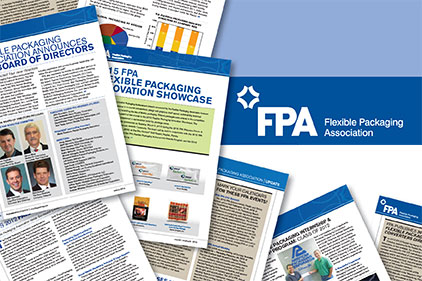The Flexible Packaging Association’s (FPA) says its “Sustainability Life Cycle and Economic Impacts of Flexible Packaging in E-commerce Report” provides a view of the sustainability benefits that flexible packaging offers in e-commerce and quantifies the environmental and economic shipping impacts by comparing flexible packaging to other formats across a range of products.
For the report, FPA partnered with PTIS LLC and five different LCA case studies were developed using the EcoImpact-COMPASS LCA software, which allows for quick life cycle comparisons between different package formats:
- Peanut Butter Packaging
- Cereal Packaging
- Shoe Packaging
- Laundry Detergent Packaging
- E-commerce Mailer
FPA says all primary, secondary, and tertiary packaging, including dunnage from the packages, were used for the assessment. Dunnage is a filler used to prevent a product from shifting during shipping and causing product damage. Dunnage may be either paper or plastic based and includes crumpled paper, corrugated inserts, air pillows and bubble wrap. A dimensional weight and economics comparison for e-commerce was developed to highlight that flexible packaging formats demonstrated clear and distinct advantages in reducing the dimensional weight across the product categories.
FPA determined the product-to-package ratio, as well as the amount of packaging that is landfilled for 1,000 kg of each product. The amount of packaging landfilled was based on the recycling rates for each material while assuming none of the flexible packages were recycled. However, most flexible packaging used in e-commerce applications, including bubble dunnage or poly mailers, are made of LDPE, which can be recycled with grocery bags and other films as part of the store drop-off program. These materials can qualify for the How2Recycle store drop-off designation after going through the certification process.
The report states the case studies show flexible packaging has more environmental attributes for carbon impact, fossil fuel usage, water usage and material disposed of when compared to other package formats. This is due to the efficient use of resources enabled by flexible packaging.
The report finds e-commerce is a growing economic segment and brands continue to look for ways to optimize shipping and reduce costs and environmental impact while offering consumers a positive experience and protecting the product. More brands and e-commerce providers are using flexible packaging as the primary package due to its ability to withstand robust handling, limit leaks, reduce the amount of packaging material and utilize space.
The report finds an additional benefit of flexible packaging includes the robust nature of the material, which can help reduce leaks or package breaks, thus improving consumer enjoyment of a product (and brand). This is important in an e-commerce environment where a product is handled at least three times as often as a traditional retail channel.
For more information and to download a copy of the report, visit www.flexpack.org.






